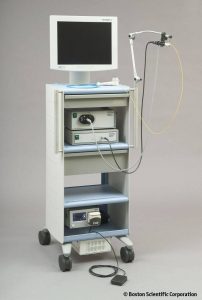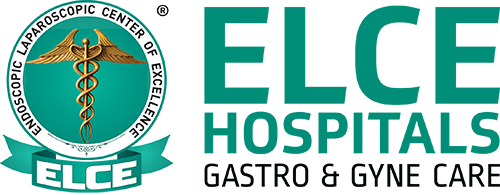ERCP & Spyglass
Know About
ERCP

ERCP is short for endoscopic retrograde cholangiopancreatography. It is a procedure that looks at the bile ducts. It is done through an endoscope.
Bile ducts are the tubes that carry bile from the liver to the gallbladder and small intestine. ERCP is used to treat stones, tumors, or narrowed areas of the bile ducts.
A thin tube (catheter) is passed through the endoscope and inserted into the tubes (ducts) that lead to the pancreas and gallbladder. A special dye is injected into these ducts, and x-rays are taken. This helps the doctor see stones, tumors, and any areas that have become narrowed.
Special instruments can be placed through the endoscope and into the ducts.
Why the Procedure is Performed
The procedure is used mostly to treat problems of the pancreas or bile ducts that can cause abdominal pain (usually in the right upper or middle stomach area) and yellowing of the skin and eyes (jaundice).
ERCP may be used to:
- Open the entry of the ducts into the bowel (sphincterotomy).
- Stretch out narrow segments (bile duct strictures).
- Remove or crush gallstones.
- Diagnose conditions such as biliary cirrhosis or sclerosing cholangitis.
- Take tissue samples to diagnose a tumor of the pancreas, bile ducts, or gallbladder.
- Drain blocked areas
Endoscopy may also be done to:
- Bleeding from diverticula or other lesions can be treated by injecting medicine around them or by applying heat to cauterize — or seal — them.
- Polyps, some of which may be cancerous, can be removed using a lasso-like device through the colonoscope.
- Narrowed areas or strictures can often be dilated using a balloon.
Jaundice is one of the most common gastro problems caused from benign hepatitis to stone or tumours. So far the stones and tumors blocking the bile passage (obstructive jaundice) were treated by indirect methods.
Now the next era in this field is DIRECT VISUALISATION SYSTEM called as SPY GLASS ENDOSCOPE by which the tumors inside the bile and pancreatic passage are taken biopsies under vision and offers the specific treatment according to the histopathologies so that unnecessary major surgeries can be avoided. Next to chennai and vellore coimbatore is the third city in Tamilnadu in acquiring this spy glass visualisation technique through ELCE Cinics.
Dr. P.S.Rajan, Chairman of ELCE Clinics, is an expert in Spy Glass Direct Visualization System and recognized faculty for South Tamil Nadu.

Dr. P S Rajan said? We are proud to announce that ELCE Clinics is the first hospital in South Tamilnadu which has equipped itself with the innovative technology of spy glass endoscopy. By adapting this innovative technology we have taken a step ahead in providing advanced healthcare service to patients with biliary and pancreatic pathologies.
❝SpyGlass direct visualization system❞ has opened up blind spots in the treatment of disorders of biliary system of the human body. It provides unprecedented, direct visualization of all bile-duct quadrants, enabling lifesaving treatment of patients ailing with HPB disorders.
Spyglass
Life threatening diseases involving the liver, pancreas and gall bladder can now be diagnosed and treated under direct vision, which were earlier diagnosed using a 2D X-Ray image?. He demonstrated the equipment and shared his experience with spy glass scopy by his videos of cases done.
The SpyGlass Direct Visualization System is a single-operator cholangioscope that is used by experienced, skilled physicians to either remove difficult bile duct and/or pancreatic duct stones or evaluate indeterminate strictures within the bile ducts or pancreatic duct.
Cholangioscopy is an advanced endoscopic technique whereby a small-caliber endoscope is advanced through a larger endoscope into the bile duct or pancreatic duct for direct endoscopic visualization of the anatomy and potential pathology.
SpyGlass has enabled early detection and treatment of indeterminate diseases, large impacted stones, etc., decreased patient discomfort, reduced hospital visits and brought back patients to normal life sooner than with conventional techniques.
It is a minimally invasive procedure for treatment of diseases which were earlier treated by surgery, hence, reducing mortality and morbidity.
